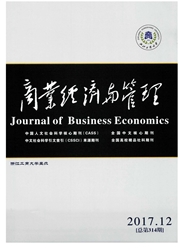

 中文摘要:
中文摘要:
文章以2011年至2014年沪深A股主板上市公司为研究对象,基于信息不对称理论,实证检验了盈余管理行为与信贷资源可获性的关系。结果显示,企业通过盈余管理行为上调利润越多,获取的银行信贷额越大。结合企业产权性质和金融市场化程度进一步深入探究盈余管理行为对信贷融资特征的影响,研究结果表明,国有企业偏向于通过应计盈余管理获取更多的信贷资源,非国有企业偏向于通过真实盈余管理获取更多的信贷资源;金融市场化强度高的地区企业偏向于通过真实盈余管理获取更多的信贷资源,金融市场化强度低的地区企业偏向于通过应计盈余管理获取更多信贷资源。
 英文摘要:
英文摘要:
This paper selects 2011-2014 Shenzhen A-share listed companies and Shanghai A-share listed companies from the main board as the study object, considering the objective reality in the credit markets, this paper makes an empirical analysis to examine how the real earnings management and accrual management impact on credit allocation. The result shows that the firms with more profit through earnings management access to more credit resources. Do further analysis under the specific system background in China. Conclusions are as follows:The firms with more profit through accrual management access to more credit resources, this phenomenon is more obvious in the state-owned enterprises and the low level financial development region; the firms with more profit through real earnings management access to more credit resources, this phenomenon is more obvious in the non-state-owned enterpri- ses and the good regional financial development environment.
 同期刊论文项目
同期刊论文项目
 同项目期刊论文
同项目期刊论文
 期刊信息
期刊信息
